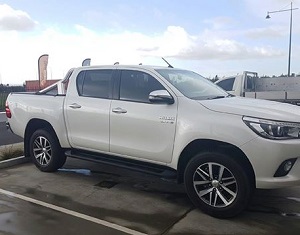Posted by Darren Pay on Oct 22, 2020
In Australia, people often disregard the need to install film tints because they feel that their factory tint is sufficient to block out harmful rays and reduce the heat. However, factory tints do not protect you and your car interiors from the harmful UV rays or sun damage. That is why film tints are essential. To help you know more about why it is a necessity, let's dig into the differences.
Factory Tints
It is a darkly pigmented layer on the window that is installed by the car manufacturer. It only provides privacy and reduces glares but lacks the benefits that a film tint provides. In Australia, it is not installed on the front windows or windscreen but only on the passenger window and rear windows.
Pros-
- Preinstalled by Manufacturer
- Durable
- Reduces harmful glare
- Provides car window with a darker hue
Cons-
- Cannot be customized
- Inefficient against heat grains
- Inefficient against UV and UVA rays
- Found on rear and back passenger windows
Film Tints
It is a multi-layered polyester tint comprising of 3-4 layers such as the adhesive layer, the ceramic/metallic particle layer, the dye, and the topcoat. The reflective properties, color, and light transference is impacted based on the number of particles and type.
Pros-
- Keeps the car cool by absorbing the sun's heat
- Prevents window glass from shattering
- Effective against UV rays
- Reduces sun damage
- Can be easily removed without causing damage to the window glass
- Available in various shades, designs, and colors
- Available for all car windows
Cons-
- Needs to be installed by a professional
- Choosing the wrong shade could cause legal issues
- Cost implication
Can You Install a Film Over Factory Tint?
 Yes, an aftermarket window film must be installed only on an un-removable tint as it complements the factory tint and provides better protection against UV rays and the sun's heat. For the best results, it would be good to keep a few things in mind, they are;
Yes, an aftermarket window film must be installed only on an un-removable tint as it complements the factory tint and provides better protection against UV rays and the sun's heat. For the best results, it would be good to keep a few things in mind, they are;
- Never layer an aftermarket film on another one as it would interfere with the function of the windows.
- You should comply with the legal darkness limit set in Australia. According to Western Australian law, your front window must have 35% Visible Light Transmission while your rear and side windows should have 20%.
- They come in various shades, so you can easily pick a shade that suits your needs.
- It is best to seek professional guidance and advice before installation, to ensure it complies with the VLT limits.
Which is the Best Window Film?
There are Four Types, They are;
- Dyed Films: They have a layer of dye between the adhesive layer and the polyester topcoat. They block harmful glares, UV rays, and are non-reflective. However, they deteriorate with time.
- Metallic Films: This includes a layer of metallic particles that allows it to reflect the rays of the sun. Although they are effective and durable, they interfere with on-board GPS systems and cell phones and block radio waves and electronic signals.
- Ceramic Films: It includes a layer of ceramic particles that are non-conductive. They do not fade, block about 99% of harmful UV rays, reduces glares, keep your car interiors cool, and don't interfere with any electronic signals. However, they are expensive.
- Carbon Films: They are available in a dark hue with a matte finish that won't fade even with continuous usage. They reflect around 40% of infrared light.
However, out of the 4 types, the Ceramic and Carbon ones are the best options.
Can You Remove It?
Whether you wish to remove and replace your film with a new one that complies with the new tint law or if you wish to replace it with a new shade, you can easily do so by visiting your local or preferred window tinting shop. However, if you wish to do it by yourself, all you have to do is re-activate the adhesive and then remove it gently.
You can use the steamer method, the hairdryer technique, using ammonia and sun, or by using the soap and newspaper/scraper method. But keep in mind that doing it yourself could cause further damage to your window if not done correctly, that is why it is always best to seek professional help.
What Percent is Factory Tint?
Most cars in Australia, have a factory tint percentage of 15% to 20%, therefore allowing only that percentage of visible light inside while deflecting the remaining light.
In a nutshell, since factory tints do not provide enough protection from UV rays, sun damage or harmful glares, it is essential to use an aftermarket window tint.